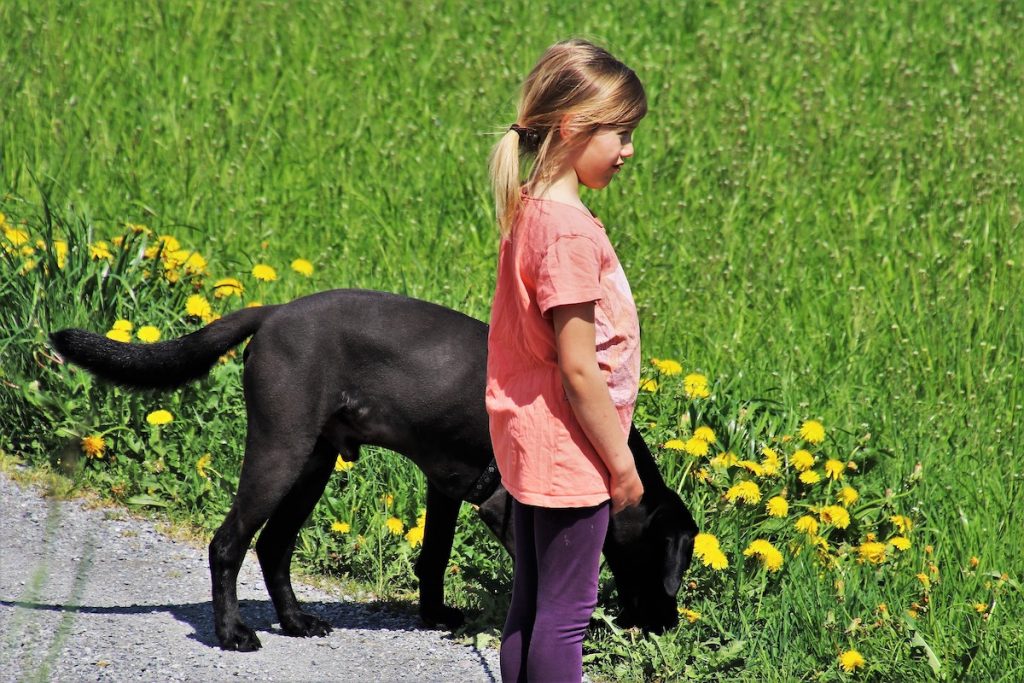As I wrote in my previous post, the way children behave is pretty much the opposite of what dogs like: children are loud, unpredictable and often know no boundaries. Their motoric skills are still developing so they might play rough with the dog. Or grab their toys or food. It is our responsibility as their guardians make children and dogs alike feel safe and comfortable at home. And who can teach your child better than you?
Lead by example
The do’s and don’ts presented below are directed at children, but in general they apply to you as well. Research has shown that children learn through imitation (read more: a short summary and a research paper). So if they should not get anywhere close to the dog during feeding time, you must also steer clear during that time! If you want your child to follow the rules you set, make sure you keep them yourself.
Of course there will be exceptions. My advice would be to explain the reasons for the exception if your child is old enough to understand; if they aren’t, then just stick to the rules when you’re with them1.
Offer alternative interactions
This is another useful tip I picked up from Aurea Verebes’ seminar. There will be times when the child really wants to interact with the dog, but direct, physical interaction is impossible for some reason (the dog is not ready, tired, sick…). In these cases you can offer alternative interactions:
- making toys for the dog (for example from toilet paper rolls)
- filling food toys
- preparing searches (if your dog can do scent work)
- hiding food around the flat for the dog to find
Another advantage of that is that all those nice things (toys, food) will carry your child’s scent, which means that your dog will associate pleasant things with them2.
Tips and tricks
Barrier clicking – in this technique you create a physical line (for example with a colourful piece of string) to help your dog and your child with boundaries. It can be placed around the dog’s resting place or your child’s play area, as a visual cue that they should be left alone. Then train them not to cross it3.
A resource list – sit down with your child and create a list with two columns – toys belonging to the dog and to them. You can agree on a reward for respecting that! Hang the list in a visible place where you can easily refer to it.
A “help me” signal – many children are not capable of leaving the dog alone4. However, you can still agree on a “help me” signal – the child will use a special word to ask for your help when they know they should stop, but cannot.

A note on “training” children
Improving the situation at home requires a lot of management (see my post about the dog side of things) and some dog training, but you will most definitely have to set boundaries for your child as well.
The general principles of positive reinforcement training work for all animals, including people. If your child does something wrong around the dog5, try to understand why they behave in that way, what motivates them and what would be the right incentive to change that. In general, with younger kids you can reward them in small increments, for example with sweets or extra play time. Once they get older, success itself is going to be increasingly reinforcing.6
- One example is treat delivery: children should drop them on the floor because they are just not fast enough to deliver safely from the hand.
- Jargon: this way you can condition a positive emotional response to your child’s smell.
- Message me if you’d be interested in a Hungarian language tutorial!
- Talk to your child to figure out why and/or consult a professional.
- For example refuses to leave them alone despite repeated requests.
- If you’re interested in this topic, google TAGteach.

